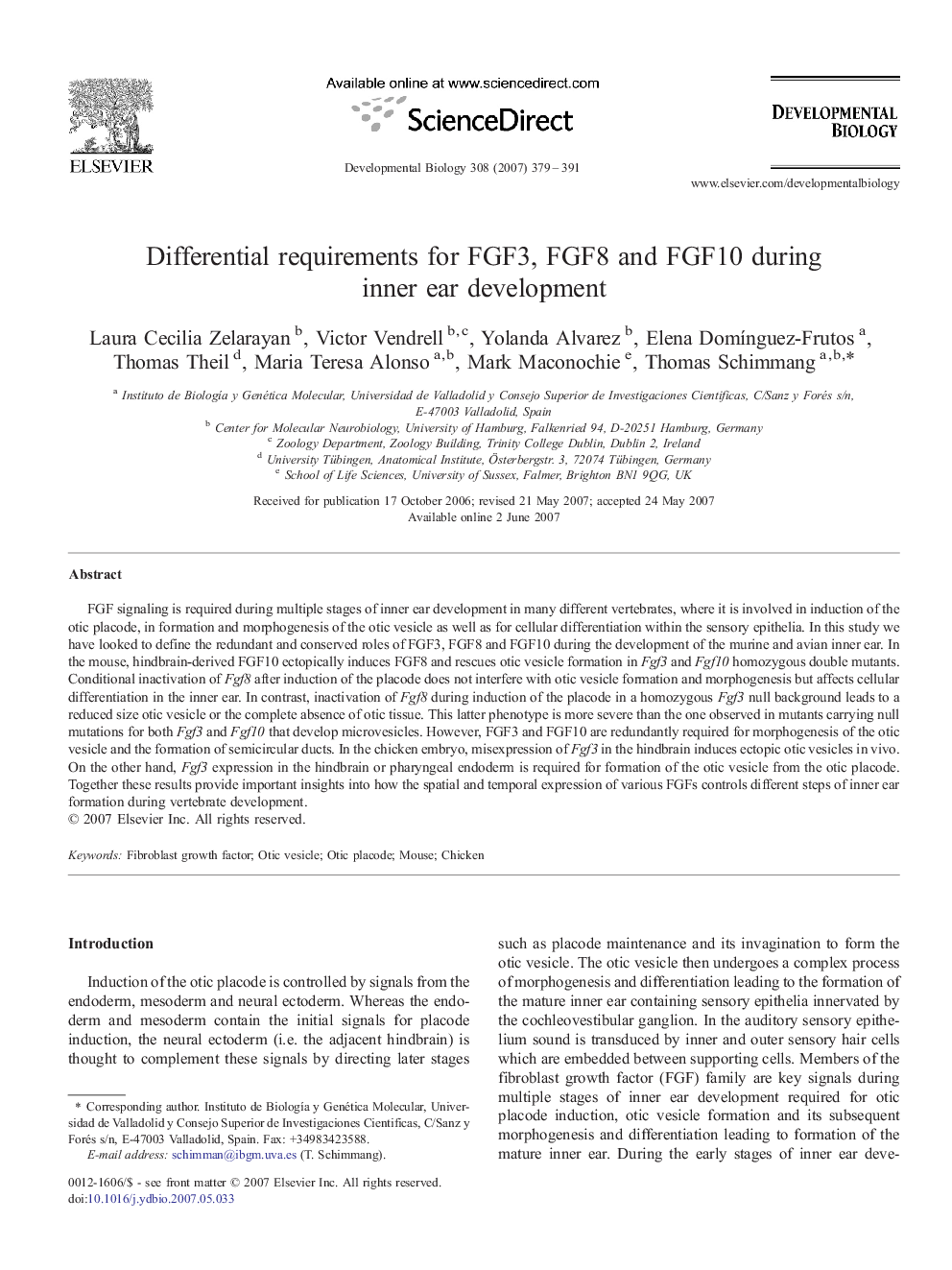| Article ID | Journal | Published Year | Pages | File Type |
|---|---|---|---|---|
| 2175052 | Developmental Biology | 2007 | 13 Pages |
FGF signaling is required during multiple stages of inner ear development in many different vertebrates, where it is involved in induction of the otic placode, in formation and morphogenesis of the otic vesicle as well as for cellular differentiation within the sensory epithelia. In this study we have looked to define the redundant and conserved roles of FGF3, FGF8 and FGF10 during the development of the murine and avian inner ear. In the mouse, hindbrain-derived FGF10 ectopically induces FGF8 and rescues otic vesicle formation in Fgf3 and Fgf10 homozygous double mutants. Conditional inactivation of Fgf8 after induction of the placode does not interfere with otic vesicle formation and morphogenesis but affects cellular differentiation in the inner ear. In contrast, inactivation of Fgf8 during induction of the placode in a homozygous Fgf3 null background leads to a reduced size otic vesicle or the complete absence of otic tissue. This latter phenotype is more severe than the one observed in mutants carrying null mutations for both Fgf3 and Fgf10 that develop microvesicles. However, FGF3 and FGF10 are redundantly required for morphogenesis of the otic vesicle and the formation of semicircular ducts. In the chicken embryo, misexpression of Fgf3 in the hindbrain induces ectopic otic vesicles in vivo. On the other hand, Fgf3 expression in the hindbrain or pharyngeal endoderm is required for formation of the otic vesicle from the otic placode. Together these results provide important insights into how the spatial and temporal expression of various FGFs controls different steps of inner ear formation during vertebrate development.
